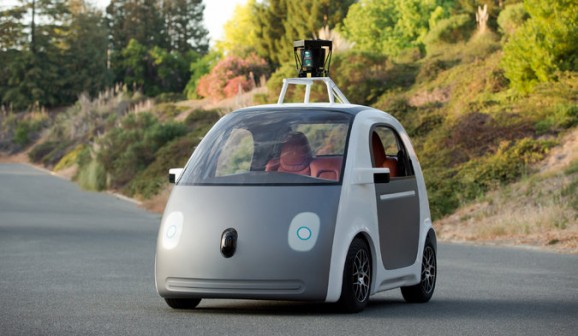Coming Soon: Licenses For Driverless Cars And Google’s New Self-Driving Vehicles
This article is more than 2 years old
 Sometime in the future, we may see robots in line at the DMV. I bet they’d take pretty good license photos. But this fall in California, humans will have to obtain licenses for the driverless cars they will “co-pilot” in a move to solidify the legality of driverless cars taking to public roads.
Sometime in the future, we may see robots in line at the DMV. I bet they’d take pretty good license photos. But this fall in California, humans will have to obtain licenses for the driverless cars they will “co-pilot” in a move to solidify the legality of driverless cars taking to public roads.
California is the first state to announce such a policy, as well as the terms of the licenses they’ll be granting. Applications will be available in July for September approval or denial, and the terms are, understandably, fairly strict. The applications are limited to test drivers who are employed, certified, and authorized by the manufacturer. Each license will cost $150, and one license can cover up to 10 vehicles and 20 test pilots. Each driverless car is required to have insurance covering at least $5,000,000 for personal injury, death, or property damage. The test drivers, who themselves have to meet criteria, have to be a position to take control of the cars at all times.
Google is also working on self-driving cars that wouldn’t fit the above criteria, namely because human co-pilots wouldn’t be able to take control of them given that they don’t have steering wheels or pedals. Yep, Google is working on completely autonomous vehicles — probably so we can all safely surf the internet to our heart’s content while in the car.

The new generation of driverless vehicles are two-passenger electric cars that resemble Smart cars. The first fleet will be comprised of 100 of these vehicles, which Google hopes will be ready to join the other driverless cars on the streets in a couple years. The new cars could operate individually, like taxi cabs, picking up and dropping off passengers, or they could operate as a unit, more like a train. A smartphone app would allow passengers to summon the car — and to avoid making awkward small talk.
Initially, the driverless cars would be capped at 25 mph, but once proven to be safe, could go much faster, even up to 100 mph. The windshields are plastic, and the front of the car is padded with two feet of foam — just in case. They’ll also have a panic button for an emergency stop. Thus far, it’s not clear whether Google would manufacture the cars — an unnamed manufacturer in Detroit is producing the first fleet — or whether they’d be produced by one of a number of partners on the project.
Even though 50% of Americans surveyed in a recent PEW poll say they wouldn’t ride in a driverless car, I bet we’ll see that change once these cars are on the road, and once nasty commutes can become leisure time.












